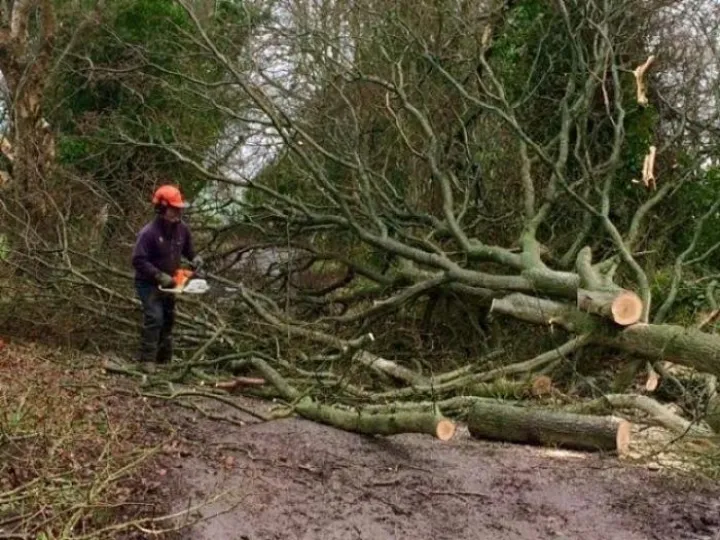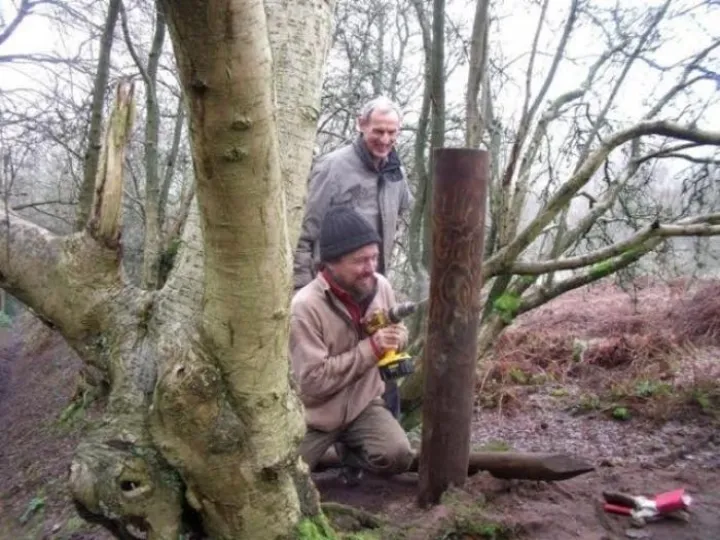Richard Webster - A Day in the Life of a National Trust Ranger
As a countryside ranger for the National Trust, my day to day duties are varied to say the least. This very rewarding job is spent almost exclusively outdoors, where two consecutive days are rarely the same. I am often stopped whilst out and about, by visitors who inform me that this is "a remarkable office" and I couldn't agree more.
My daily duties are often determined by the numbers of volunteers I have that day and can include installing a stock fence, repairing a bird hide or improving a path surface. However, sometimes all the planning in the world can leave you unprepared for what lies ahead, as I found out when Storm Doris came calling in February of this year.
Winds in the region of 100 miles per hour were commonplace throughout the UK during the storm and having a site containing areas of woodland, Doris was obviously a concern for the Bickerton Hill team. As the winds began to increase significantly during the course of the day, we weren't surprised to find an old oak tree blown over on an access track hindering our way out. My boss and I spent two hours on the chainsaw to clear the track, but with the wind showing no signs of relenting we found three further trees blocking our exit. With a little more work on the saw we were able to make our escape for the day. Whilst the considerable winds that accompanied Doris were causing damage to the site, I couldn't help but recognise a real sense of excitement during the day as well as great respect for Mother Nature (our image to the right shows 'clearing up after Doris')
On arriving back to work the following day, we were met with beautiful blue skies and not a breath of wind, a complete contrast to the previous twenty-four hours. Time was spent weighing up the damage caused to the site, of which there was plenty. Large scale damage was apparent at a number of sites within the Wirral area of the portfolio, owing to them being more exposed on the coast. Various trees had been damaged, many of which were over pathways, but fortunately nobody had been hurt. Prioritising the removal of the most dangerous trees was then of paramount importance, and my colleagues and I set about the removal of the destruction. It is worth noting that the timber will not be allowed to go to waste, providing benches and log barriers across the region or to be left in-situ as important dead-wood habitat.
One day of high winds ended up keeping us busy on chainsaws for a number of weeks afterwards, resulting in some of the other everyday jobs being re-prioritised for a later date. Storm Doris was of course a one off, and although there are times of the year when high winds will once again see me complete the mandatory post storm site inspection, my time will be spent chipping away at the jobs from my site plan along with those that present themselves in the mean-time.
A real point to note on the life of a countryside ranger is the fact that there is often such a contrast from one day to the next. It is a thoroughly rewarding profession, where there is a huge range of responsibilities with no two properties being the same. To inspire the visitors and volunteers alike on a daily basis, in order to conserve and improve this beautiful part of Cheshire, is a job I take a great deal of pleasure from.
{Our second image shows 'working on a fence line with volunteers'.
}
Richard Webster
Assistant Ranger – National Trust, Bickerton & Bulkeley Hills

Sandstone Ridge Trust
Registered Company No. 7673603
Registered Charity No. 1144470
info@sandstoneridge.org.uk

